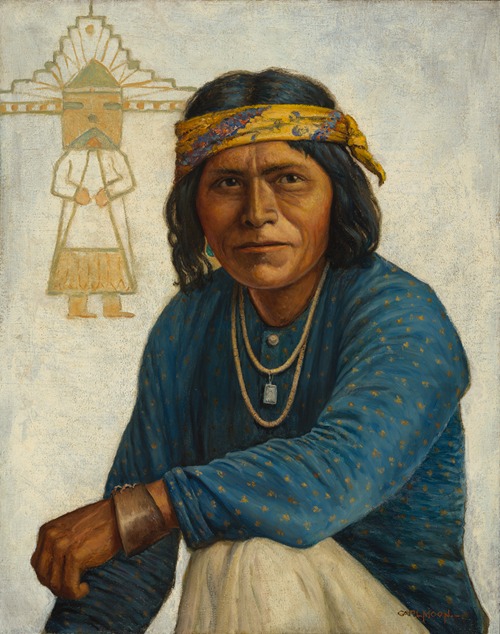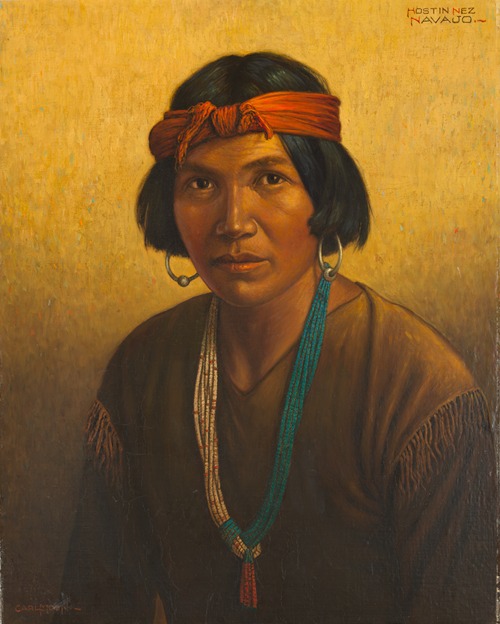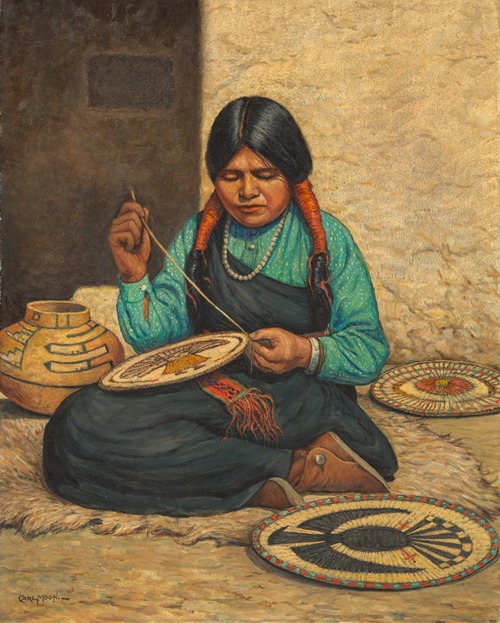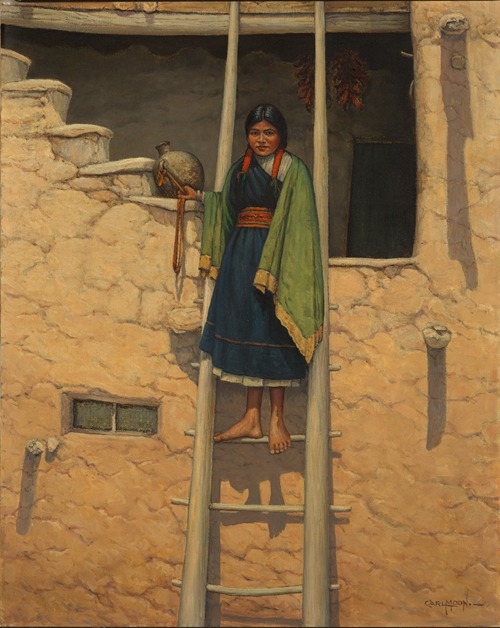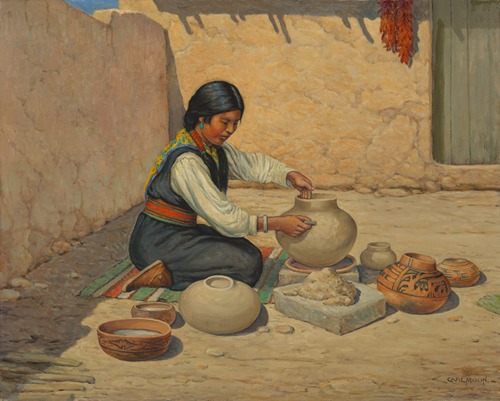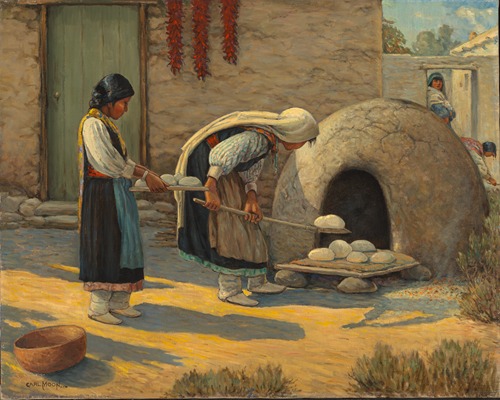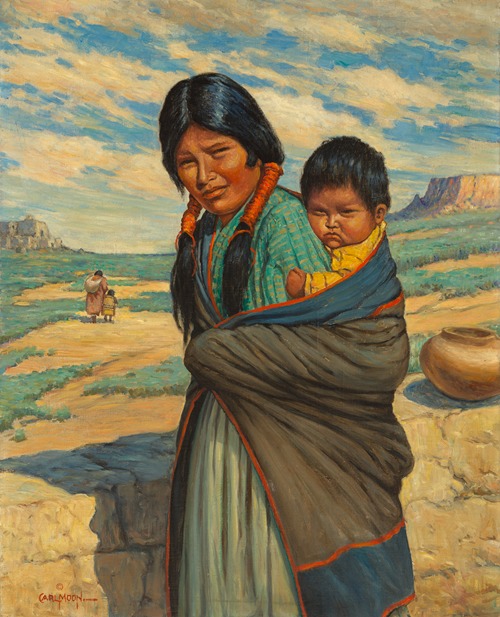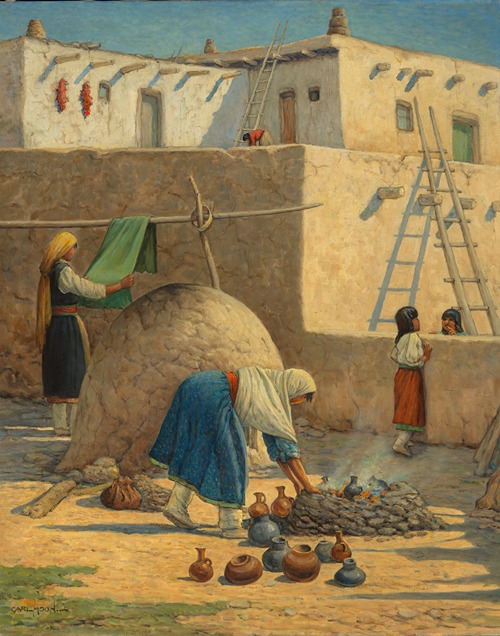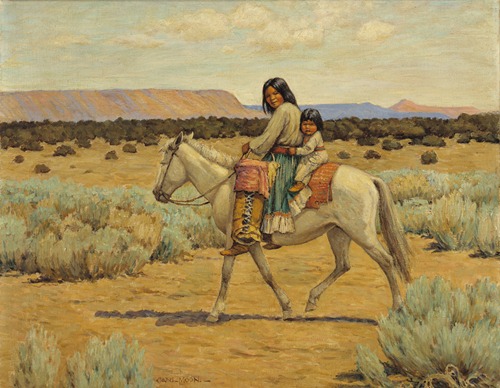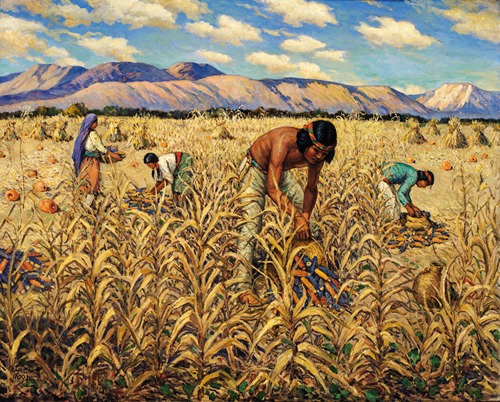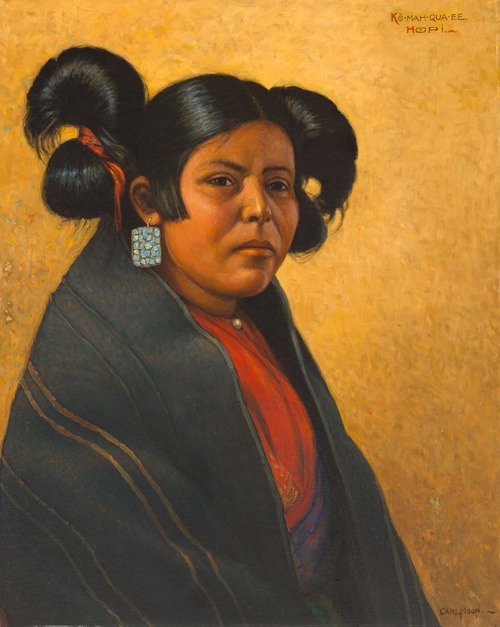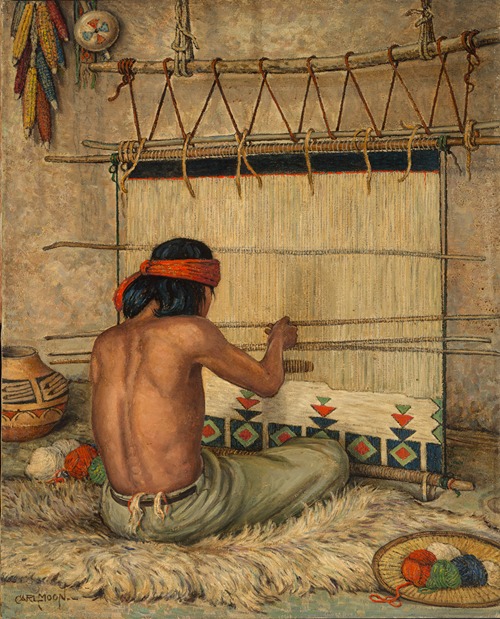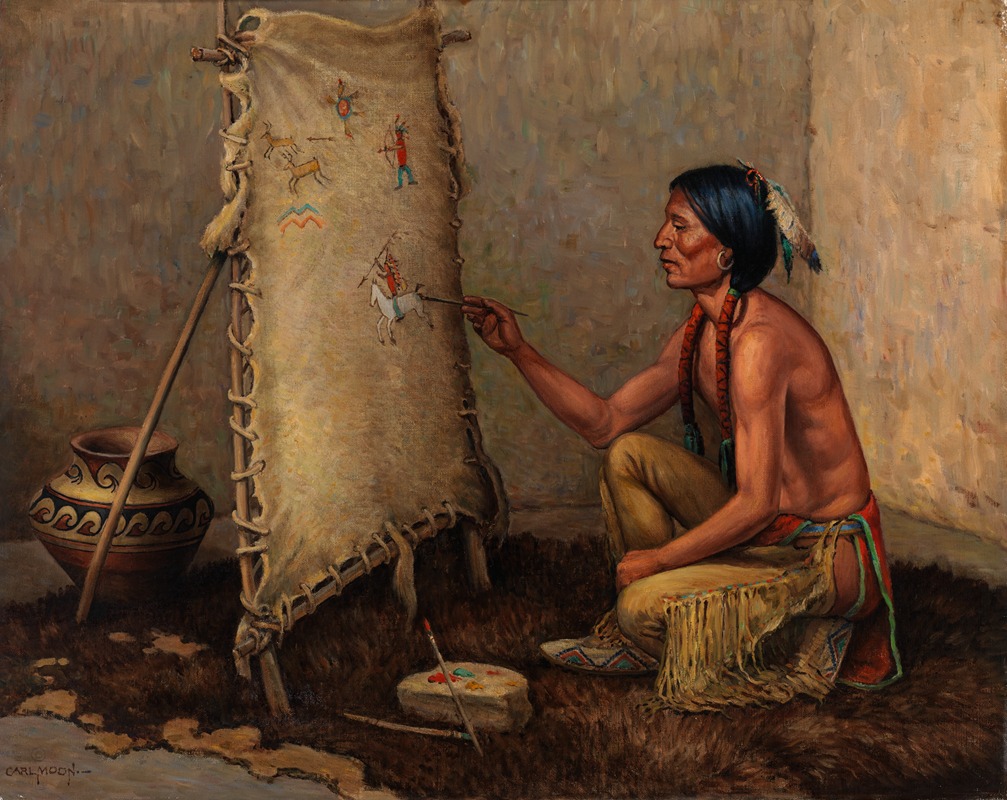
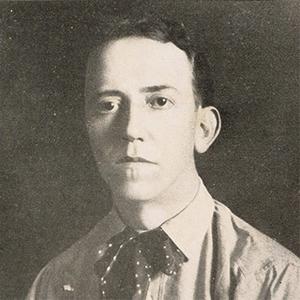
Carl Moon was an American photographer, book and magazine illustrator, painter and writer focused on Native American subjects. He has been called "the imitator of Edward Curtis" and "the last of the great early photographers to go west."
Carl Everton Moon (or Karl, as he spelled his name prior to anti-German sentiment during World War I) was born in Wilmington, Ohio, on October 5, 1878. After serving two years in the Ohio National Guard, he became a photographer's apprentice. He studied the trade for six years in Ohio and West Virginia. In 1903, he set up his own studio in Albuquerque, New Mexico. The move was precipitated by the fact his first wife Bessie Wilson had contracted tuberculosis. At the time, a hot, dry climate was thought to be an effective cure. In addition, as a boy, Moon had determined to head West after reading James Fenimore Cooper's adventure stories.
From 1903 to 1907, he made photographs and oil paintings of Pueblo peoples in the area. As a painter, he studied with visiting artists Thomas Moran, Frank Sauerwein and Louis Akin. Moon's studio was close to several Native American villages; many of the inhabitants came into town to sell beadwork, buckskin leather goods, pottery and silver jewelry. He slowly gained their trust. The Indians began coming to Moon's studio and, in turn, he visited them in their communities, sometimes spending weeks at a time. Using the heavy, clumsy cameras of the period, he started making photographic "art studies" as he called them.
From 1905 to 1906, Moon had a short-lived partnership with Albuquerque businessman Thomas F. Keleher in the Moon-Keleher Studio. When the partnership dissolved, Moon continued his work, photographing chosen portrait subjects in a posed, romantic style. He published and exhibited many of the photographs nationally, including a show at the Museum of Natural History in New York. As a result of a meeting with publisher James Adams Thayer, Moon's photos appeared on the covers of Ridgway Magazine, The Literary Digest, Century, The Burr McIntosh Monthly and The New York Times. The photographs and paintings soon came to the notice of President Theodore Roosevelt who invited Moon to show them at the White House.
In 1907, Moon left Albuquerque for the photographic studio Fred Harvey had established at El Tovar Hotel on the south rim of the Grand Canyon. He was commissioned by the Fred Harvey Company to take pictures of Native American communities throughout the Southwest: Arizona, New Mexico and Oklahoma. The photos would become the Fred Harvey Collection of Southwest Indian Pictures. They were used in marketing materials by the Fred Harvey Company and the Santa Fe Railroad, for which Moon was the official photographer. Harvey operated a chain of successful gift shops, restaurants and hotels, known as Harvey Houses, along the rail lines of the Southwest.The Harvey Company used Moon's photographs (often without credit) on their postcards, and in brochures and publications for the tourist industry. Harvey Co. had partnered with the railroad in 1876 to generate tourism in the region.
The majority of photos represent Hopi, Navajo and Taos Pueblo peoples, but there are also images of Osage, Apache, Zuni and other Southwestern peoples. There are numerous formal portraits, as well as posed, romanticized scenes depicting storytelling, hunting, weaving, pottery making and playing instruments. Candid images show people in their daily activities and dance ceremonies.
Color postcards featuring Moon's images were printed by the Detroit Publishing Co. (DPC) via the Phostint process in which black and white photos were "colorized." Each color was printed separately; anywhere from eight to twenty different colors were required per card. Harvey ordered hundreds of thousands of DPC Phostints to sell in his hotel gift shops alongside the Native American jewelry, blankets and baskets he commissioned from local artisans.
During the same time frame, Moon also sold photos to major companies such as Stetson Hats and Wells Fargo for use in advertisements, calendars and logos.
In addition to his photographic duties at The Harvey Co., Moon served as the director of art. In this position, he assisted Harvey and the American Museum of Natural History in acquiring paintings of Indians.
He also collected Indian prints for the Library of Congress and the Montclair Museum.
On June 5, 1911, Moon married American children's author Grace Purdie in St. Joseph, Missouri. After their marriage, they lived together at El Tovar studio. She shared his interest in the tribes of the American Southwest. The couple traveled together throughout the region, including Hopiland, Taos Pueblo and the Navajo Nation, carrying little gear and relying on trading posts for food. During these forays, they observed the customs and culture of the indigenous people.
In 1914, Moon resigned from The Fred Harvey Co. The couple moved to Pasadena, California. From 1917 until his death in 1948, they collaborated on nearly two dozen children's books with Native American themes. He co-wrote and illustrated. The first book Indian Legends in Rhyme was inspired by Grace Moon's letters to her future husband, written in verse.
Moon continued to make photographs and paintings at the Pasadena studio. He painted 24 Indian studies for Henry E. Huntington, four for the Otto Vollbehr collection in Charlottenburg, Germany, and 26 oil paintings of Southwest Indians for the Smithsonian Institution. In 1924, Moon began work on Indians of the Southwest, a four-volume atlas-folio set containing one hundred of his best photographs. It was finally published in 1936, but only ten copies were ever printed.
Moon died at the home of his daughter in 1948.
